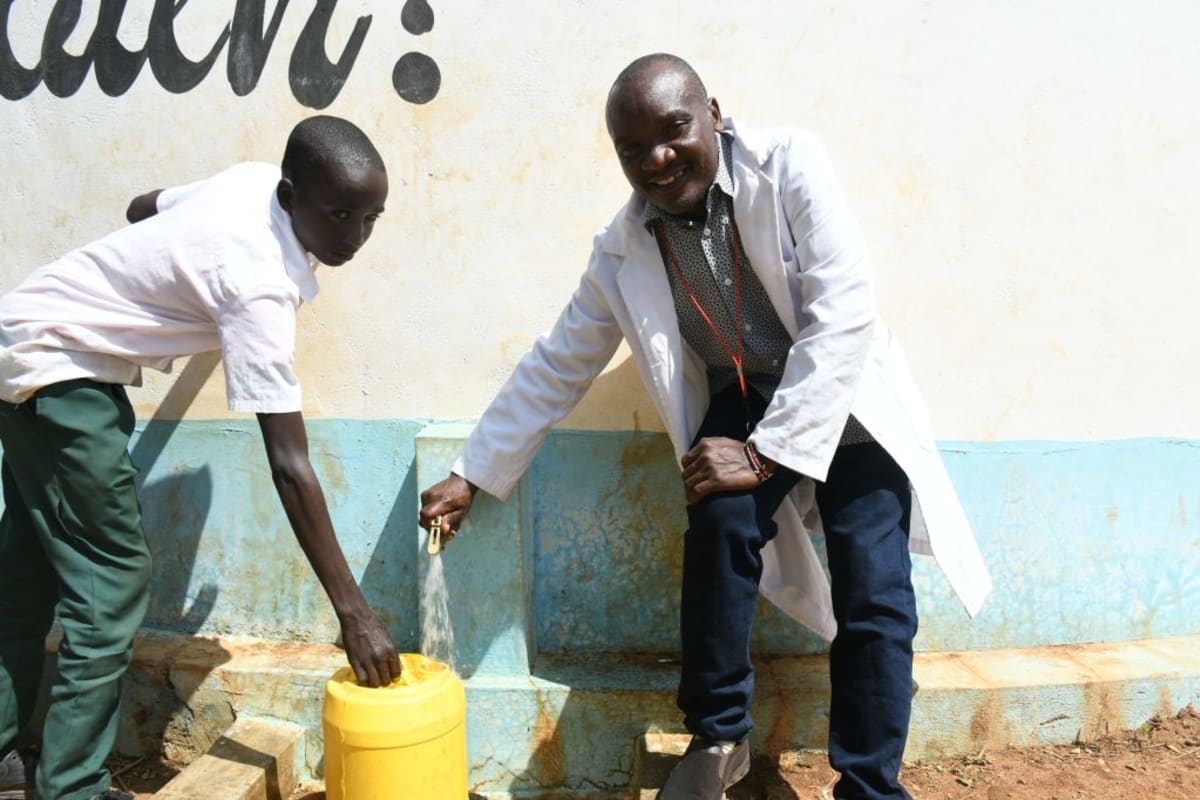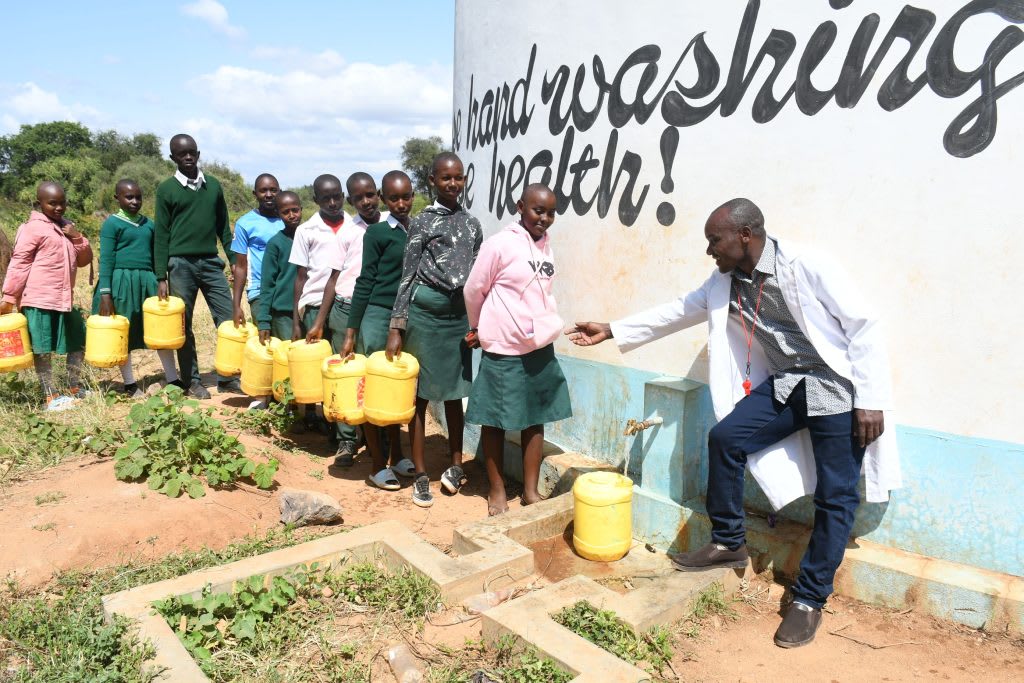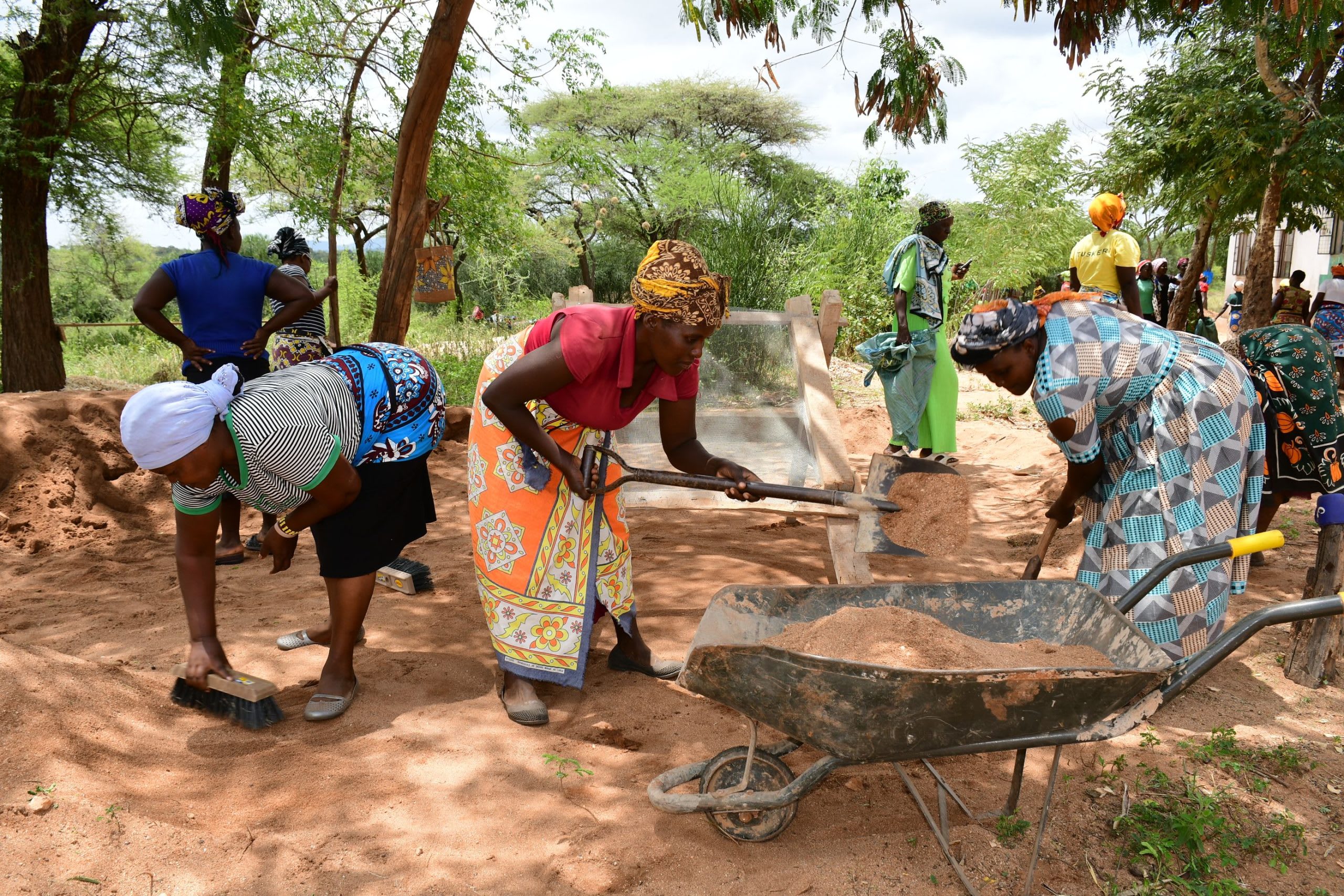The 573 students and staff of Kandwia Primary School have a disheartening experience, burdened by the many things they cannot accomplish due to the water crisis they face daily.
"Without access to clean drinking water, students fail to stay healthy due to waterborne diseases, fail to hold their concentration for long periods of time due to dehydration, and fail to maintain proper hygiene standards. On top of that, the school cannot run programs if they cannot provide water to pupils, faculty, and their families. This impacts the education system as it limits opportunities for growth and development," said field officer Jefferson Mutie.

The school has a couple of small plastic rainwater tanks on its campus. Still, due to the infrequent rain in this semi-arid region and their limited capacity, they cannot hold enough water to meet the school's needs and run dry quickly. When the tanks sit empty, students must collect water at home from unknown sources and bring it to school with them. It is risky to consume this water, and it often leaves students with water-related illnesses that cause them needless suffering and make them miss valuable learning time. As a last resort, the school pays for trucks to deliver water from unknown sources, but it is a financial expense the school can not afford, which steals from other needs.

"I love this school so much. I believe this is the best school, just that we lack water, which is [a] basic need here. I have [a] hard time trying to control such a crowd with minimal drops of water. The pupils have a big trust in me, and whenever I fail to have water in school, I feel like one big failure being looked at by over 500 pupils," said teacher Erick Muthwii (shown above).
 "The water situation in my school makes my days in school very tough. I do not like being requested to come along with water in school. I remember one day, I tripped and fell as I was coming to school, and my books got wet. I really hated the school that day. I hope to see a miracle whereby we have plenty of water in the school," said 12-year-old Monicah V., shown above carrying water to school.
"The water situation in my school makes my days in school very tough. I do not like being requested to come along with water in school. I remember one day, I tripped and fell as I was coming to school, and my books got wet. I really hated the school that day. I hope to see a miracle whereby we have plenty of water in the school," said 12-year-old Monicah V., shown above carrying water to school.
The administration is passionate about providing the best education possible for their students. Children dread school; they don't have the capacity to dream of a brighter future, weighed down by the challenges they face.
Installing a much larger tank will allow more water to be collected and stored for much longer so it can meet everyone's needs. Then, students and staff will have time and energy to focus on learning instead of constantly searching for and collecting water.
Water at schools is unique, which is why we need unique solutions.
The Proposed Solution, Determined Together...
At The Water Project, everyone has a part in conversations and solutions. We operate in transparency, believing it benefits everyone. We expect reliability from one another as well as our water solutions. Everyone involved makes this possible through hard work and dedication.
In a joint discovery process, community members determine their most advantageous water solution alongside our technical experts. Read more specifics about this solution on the What We're Building tab of this project page. Then, community members lend their support by collecting needed construction materials (sometimes for months ahead of time!), providing labor alongside our artisans, sheltering and feeding the builders, and supplying additional resources.
Water Access for Everyone
This water project is one piece in a large puzzle. In Kenya, Sierra Leone, and Uganda, we're working toward complete coverage of reliable, maintained water sources that guarantee public access now and in the future within a 30-minute round trip for each community, household, school, and health center. One day, we hope to report that this has been achieved!
Training on Health, Hygiene & More
With the community's input, we've identified topics where training will increase positive health outcomes at personal, household, and community levels. We'll coordinate with them to find the best training date. Some examples of what we train communities on are:
- Improved hygiene, health, and sanitation habits
- Safe water handling, storage & treatment
- Disease prevention and proper handwashing
- Income-generation
- Community leadership, governance, & election of a water committee
- Operation and maintenance of the water point
Handwashing Stations
Alongside each water source in Southeast Kenya schools, we also provide three new handwashing stations fitted with three taps each, allowing nine students to wash their hands at once. These will allow everyone at the school to wash their hands without running water. Handwashing is so important to help prevent future water-related illnesses in the school community.
The student health club will maintain the stations, fill them with water, and supply them with soap (which we will teach the school community how to make during the training!).





 Rainwater Catchment
Rainwater Catchment
 Rehabilitation Project
Rehabilitation Project



























